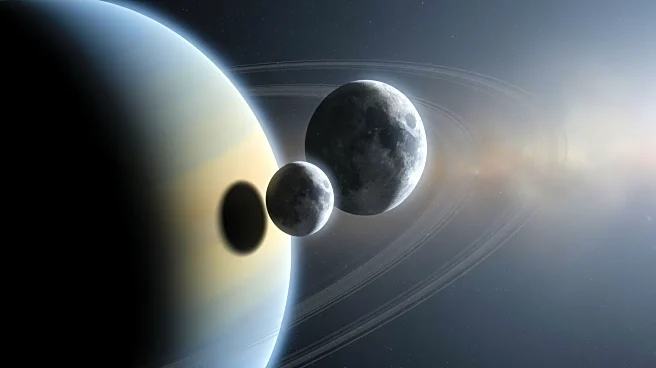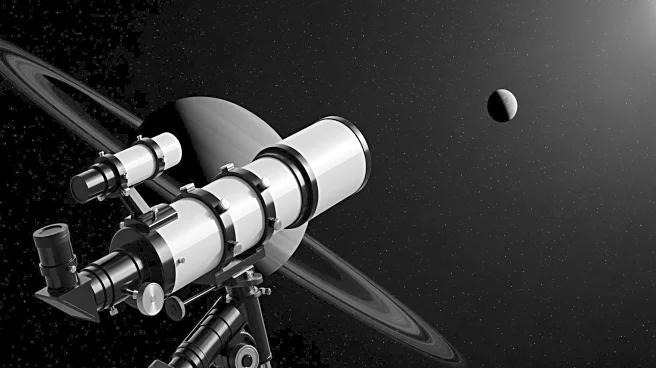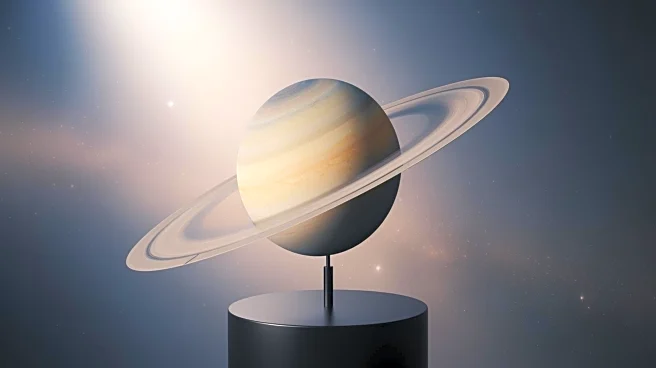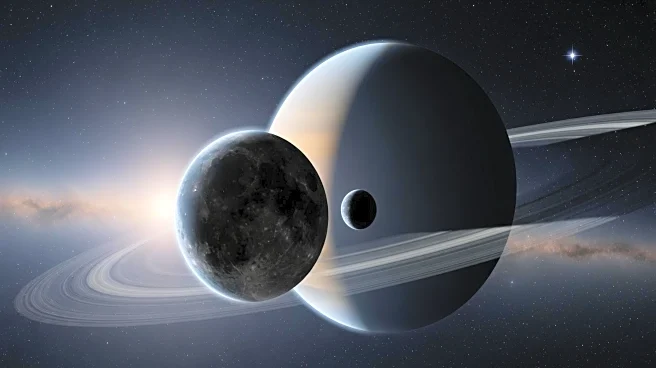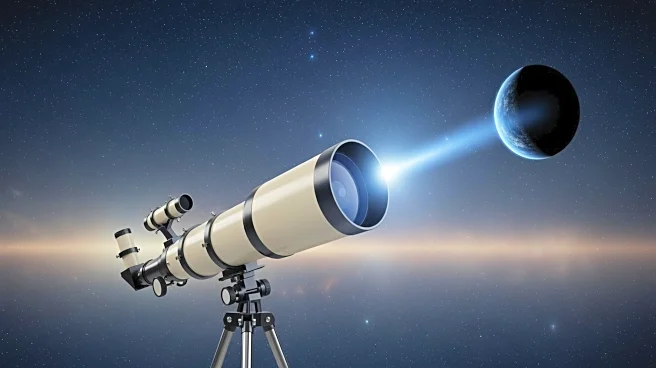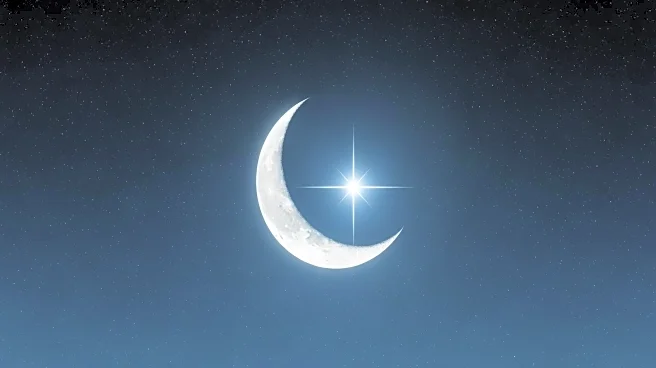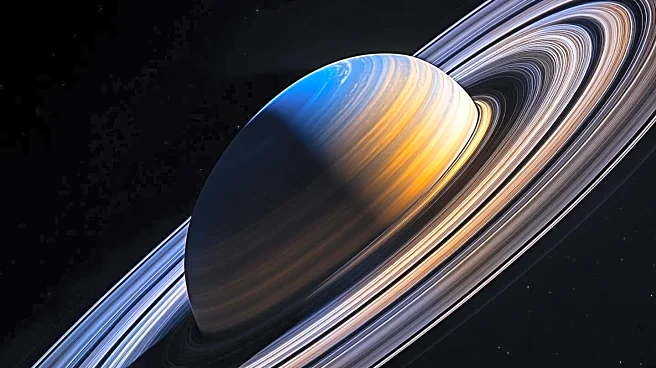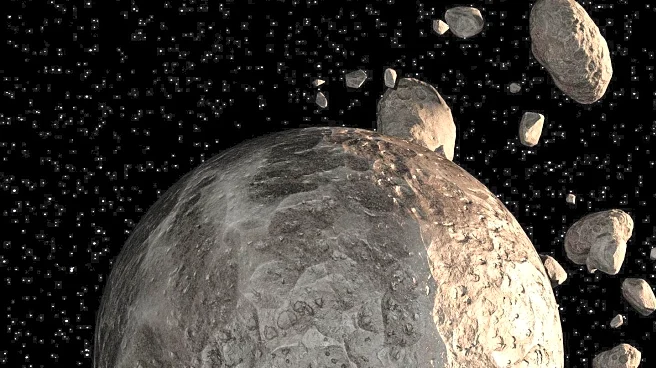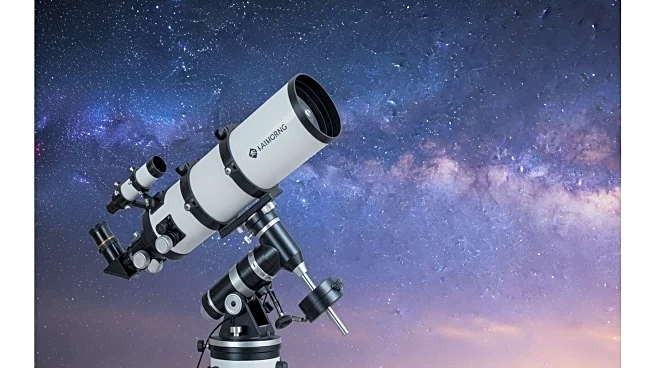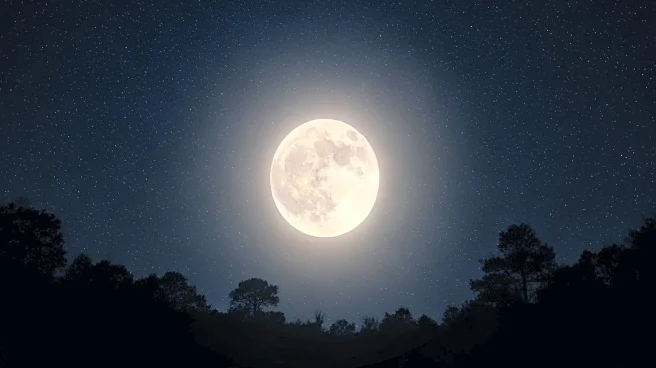What's Happening?
On October 25, Saturn's moon Iapetus reaches inferior conjunction, positioned 1.3 arcminutes north of Saturn and shining at approximately 11th magnitude. This astronomical event makes Iapetus easier to observe
near its parent planet. Saturn itself will be highest around 10 P.M. local daylight time, presenting a 43-inch wide ring system and a 19-inch disk when viewed through a telescope. At this time, Titan, Saturn's largest moon, will be situated far to the planet's west, while other moons like Dione, Tethys, and Rhea will be positioned closer to the rings. Iapetus will be located to the north of Saturn, providing a unique opportunity for astronomers and enthusiasts to observe these celestial bodies.
Why It's Important?
The positioning of Iapetus at inferior conjunction offers a rare chance for astronomers and sky watchers to observe this elusive moon, which is typically difficult to spot due to its distance and faintness. This event highlights the dynamic nature of celestial movements and provides an opportunity for educational outreach and public engagement in astronomy. Observing such events can inspire interest in space science and contribute to a broader understanding of planetary systems. Additionally, it underscores the importance of astronomical observations in tracking and studying the behavior of moons and planets, which can have implications for future space exploration missions.
What's Next?
As Iapetus remains relatively stationary near Saturn, astronomers and enthusiasts are encouraged to take advantage of this period to observe the moon and its interactions with other saturnian moons. The positions of Dione, Tethys, and Rhea will change throughout the night, offering varied observational opportunities. This event may prompt further studies and discussions within the astronomical community regarding the characteristics and orbital dynamics of Saturn's moons. Future sky events, such as eclipses and conjunctions, will continue to provide opportunities for observation and research, contributing to the ongoing exploration of our solar system.
Beyond the Headlines
The observation of Iapetus and other saturnian moons during this conjunction can lead to deeper insights into the gravitational interactions and orbital mechanics within Saturn's system. Such studies can enhance our understanding of moon formation and evolution, which is crucial for comparative planetology. Additionally, these observations can inform the design of future space missions aimed at exploring Saturn and its moons, potentially uncovering new scientific discoveries about the conditions and processes in the outer solar system.
